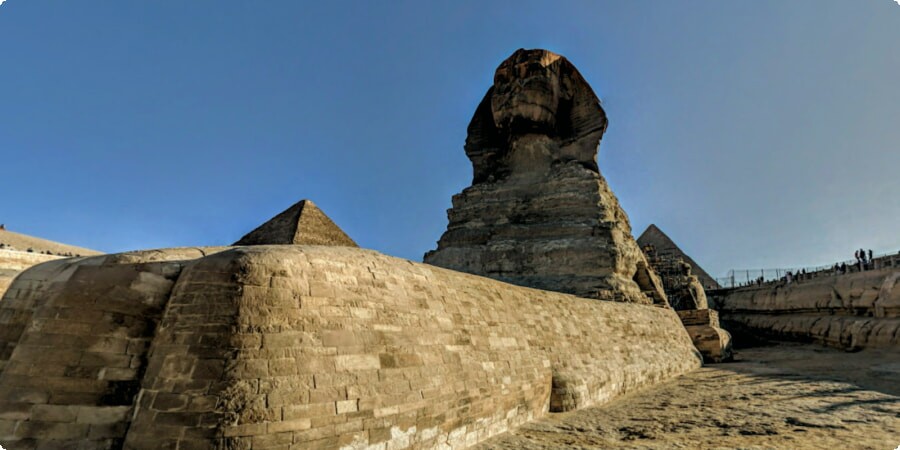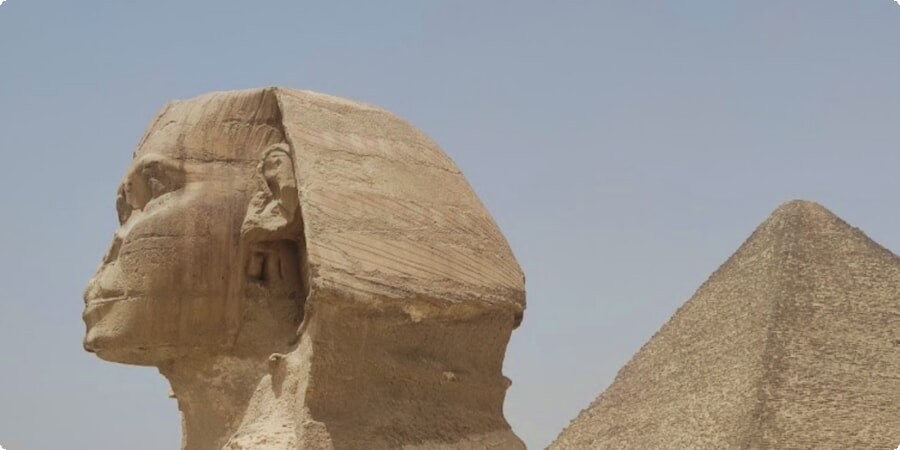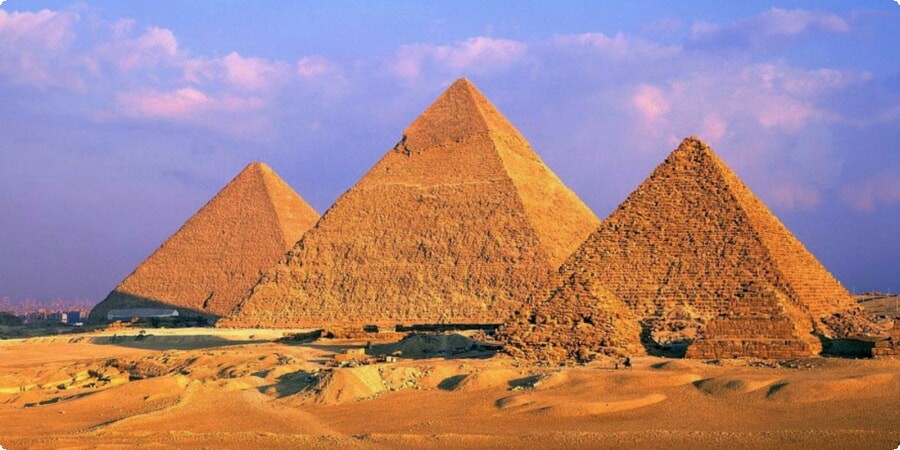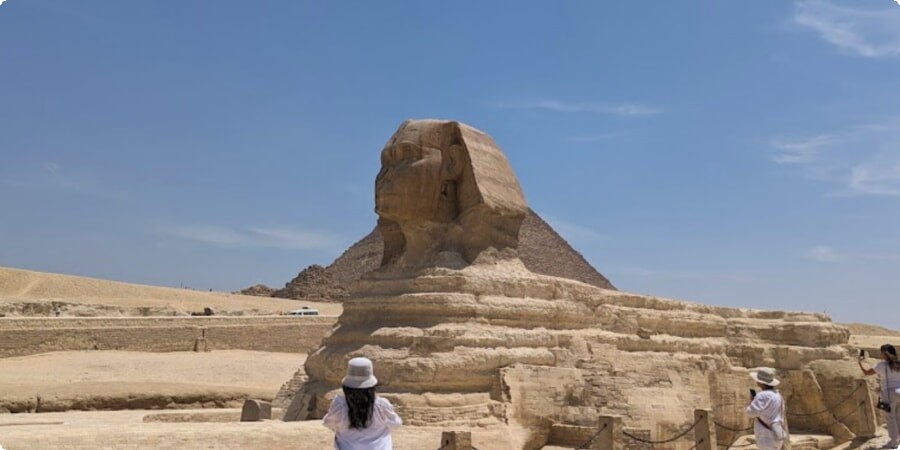Icon of Ancient Egypt: The Great Sphinx and Its Enduring Legacy
In the heart of the ancient land of Egypt, amidst the timeless sands of the Giza Plateau, stands a monument shrouded in mystery and majesty—the Great Sphinx. With its enigmatic gaze and imposing presence, the Sphinx has captured the imagination of travelers, scholars, and dreamers for millennia. In this article, we embark on a journey to unravel the secrets of this iconic symbol of ancient Egypt and explore its enduring legacy that continues to fascinate and inspire.
Historical Context
To understand the significance of the Great Sphinx, we must delve into the annals of ancient Egyptian history. Built during the reign of Pharaoh Khafre, around 2500 BCE, the Sphinx is believed to have served as a guardian of the nearby pyramids and a symbol of royal power. Standing at over 20 meters in height and 73 meters in length, the Sphinx is a testament to the advanced engineering skills of the ancient Egyptians.
Scholars have long debated the purpose and meaning of the Great Sphinx. Some theories suggest that it was constructed as a representation of the sun god Ra, while others propose that it served as a symbol of royal authority and divine protection. Regardless of its original intention, the Sphinx has endured as an enduring emblem of ancient Egypt's rich cultural heritage.
Architectural Marvel
The Great Sphinx is not only a symbol of ancient Egypt but also an architectural marvel of unparalleled grandeur. Carved from a single limestone outcrop, the Sphinx exhibits remarkable craftsmanship and attention to detail. Its body, resembling that of a lion, is adorned with intricate hieroglyphic inscriptions and symbols, while its face, believed to be a likeness of Pharaoh Khafre, exudes an air of regal authority.

The Sphinx's iconic pose, with its enigmatic smile and piercing gaze, has captured the imagination of artists, poets, and historians throughout the ages. Its colossal size and imposing presence make it a sight to behold, drawing visitors from around the world to marvel at its timeless beauty.
For travelers planning to explore the wonders of Egypt, renting a car can provide the freedom and flexibility to journey to the Giza Plateau and experience the awe-inspiring presence of the Great Sphinx up close. You can arrange your car rental conveniently at Cairo Airport through this link, ensuring a seamless and unforgettable travel experience as you embark on your quest to unlock the secrets of ancient Egypt.
Symbolism and Meaning
The Great Sphinx holds a profound symbolic significance in ancient Egyptian mythology and religion. Its hybrid form, with the body of a lion and the head of a human, is believed to embody the divine qualities of strength, wisdom, and protection. In Egyptian mythology, the Sphinx is associated with the sun god Ra, who is often depicted with the head of a lion. Additionally, the Sphinx is thought to represent the pharaoh as a divine ruler, linking the earthly realm with the celestial heavens.
Scholars and archaeologists continue to study the inscriptions and carvings on the Great Sphinx, seeking to unlock its hidden meanings and messages. While many questions remain unanswered, the Sphinx's enduring presence continues to inspire awe and wonder, inviting visitors to contemplate the mysteries of the ancient world.

Cultural Impact
Throughout history, the Great Sphinx has exerted a profound cultural impact on Egyptian society and beyond. As a symbol of royal authority and divine protection, the Sphinx played a central role in the religious beliefs and rituals of ancient Egyptians. Its image was widely reproduced in art, literature, and architecture, serving as a potent symbol of power and prestige.
In modern times, the Great Sphinx remains an iconic emblem of ancient Egypt's rich cultural heritage. It has been featured in countless works of literature, film, and popular culture, capturing the imagination of people around the world. Today, the Sphinx continues to draw tourists and scholars to its sandy shores, offering a glimpse into the distant past and the enduring legacy of one of the world's greatest civilizations.
Conservation Efforts
Preserving the Great Sphinx for future generations is a paramount concern for Egypt's cultural authorities and international organizations. Over the years, various conservation efforts have been undertaken to safeguard the monument from environmental degradation, pollution, and natural disasters. These efforts include regular maintenance, restoration projects, and the implementation of sustainable tourism practices.
Visitors to the Great Sphinx are encouraged to respect the site's cultural and historical significance by adhering to designated pathways, refraining from climbing on the monument, and avoiding littering or vandalism. By promoting responsible tourism and conservation efforts, we can ensure that the Great Sphinx continues to inspire and captivate audiences for centuries to come.

For travelers planning to explore the wonders of Egypt, renting a car can provide the flexibility and convenience to visit the Great Sphinx and other historic sites at their own pace. You can arrange your car rental through this link, ensuring a seamless and memorable journey through the land of the pharaohs.
Exploring the Great Sphinx and its surrounding area offers visitors a chance to immerse themselves in the rich history and culture of ancient Egypt. Here are some practical tips and insights for making the most of your visit:
Visitor Experience
Visiting the Great Sphinx is a once-in-a-lifetime experience that should not be missed during your trip to Egypt. Located on the Giza Plateau, just a short distance from Cairo, the Sphinx is easily accessible by car or public transportation. Upon arrival, visitors can purchase tickets to enter the site and explore the monument up close. Guided tours are also available for those seeking a deeper understanding of the Sphinx's history and significance.
Practical Tips
When planning your visit to the Great Sphinx, it's important to come prepared for the hot and dry climate of the Egyptian desert. Be sure to bring plenty of water, sunscreen, and a hat to protect yourself from the sun. Comfortable walking shoes are also recommended, as the terrain around the Sphinx can be uneven and sandy. Additionally, be mindful of local customs and dress modestly out of respect for the site's religious significance.

Additional Attractions
While the Great Sphinx is undoubtedly the main attraction on the Giza Plateau, there are several other historic sites and landmarks worth exploring in the area. Nearby, you'll find the Great Pyramid of Giza, the Pyramid of Khafre, and the Pyramid of Menkaure, all of which are UNESCO World Heritage Sites. You can also visit the Sphinx Temple, which lies in front of the Great Sphinx and was once used for religious ceremonies and rituals.
As you journey through the sands of time and explore the wonders of ancient Egypt, the Great Sphinx stands as a silent witness to the glory and grandeur of one of the world's greatest civilizations. Its enduring legacy continues to captivate the imagination and inspire awe in all who behold it, reminding us of the timeless beauty and profound wisdom of the ancient world.